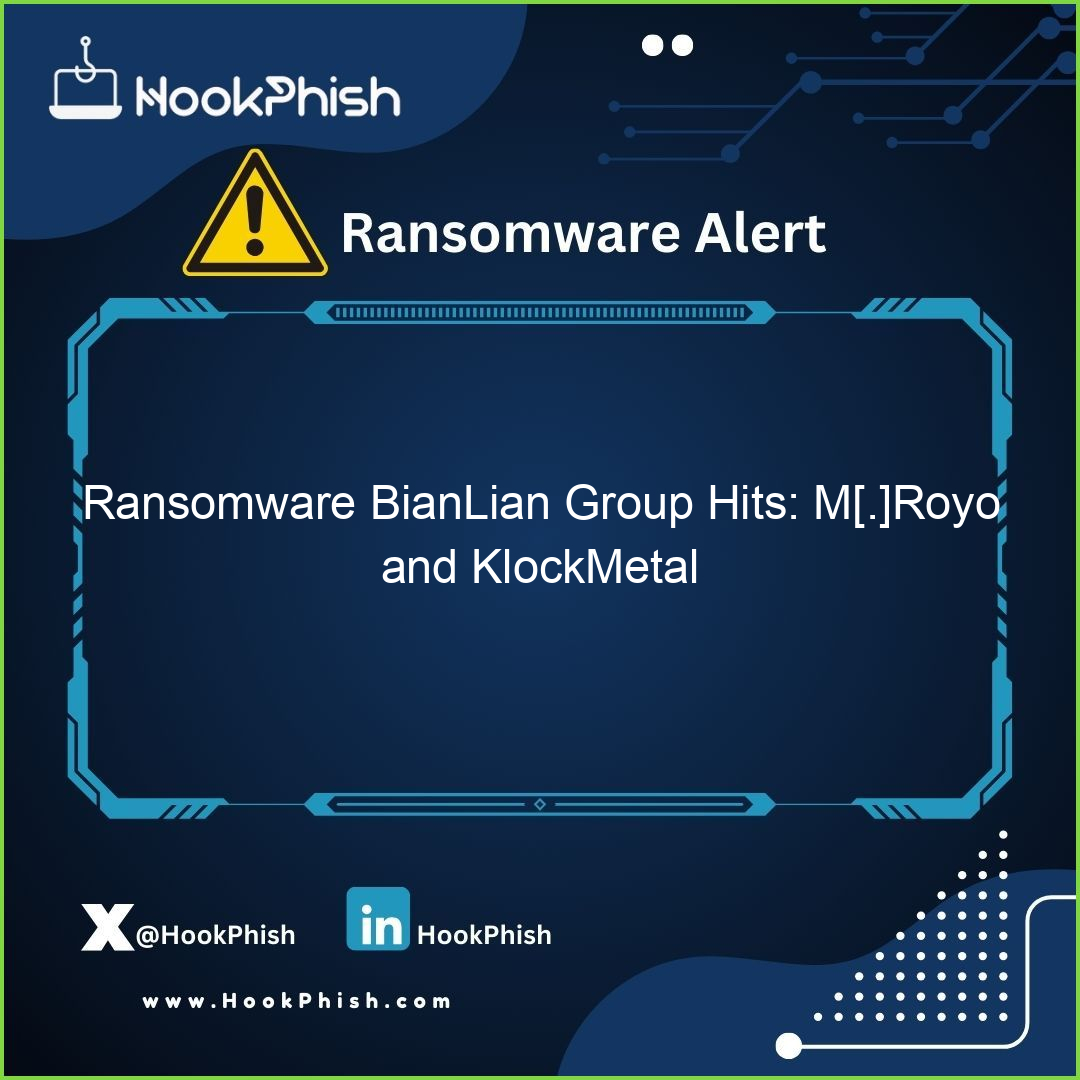The Infamous Ransomware BianLian Group Hits: M[.]Royo and KlockMetal in a recent cyber attack, raising concerns about cybersecurity vulnerabilities. To stay ahead of emerging threats, fortify your online security with the HookPhish Dark Web Monitoring platform. Explore HookPhish Dark Web Monitoring.
![BianLian Ransomware Victim: M[.]Royo & KlockMetal 1 BianLian](https://www.hookphish.com/img.php/2023/05/BianLian.png)
| Victim Name | M.Royo & KlockMetal |
| AI Generated Description | The ransomware leak page details a breach involving supply-chain data, manufacturing data, and files from user folders. Sensitive information has been redacted. The page indicates that the company is a national entity in Argentina focused on the steel pipe industry, with operations extending both locally and internationally. Download links are present but not disclosed. |
| Victim CEO (if available) | Revenue: > $5 Millions |
| Victim Website (if available) | N/A |
| Are files Available To Download? | no |
| Screenshot Info | Screenshots display folder structures and other organizational elements, with all sensitive details redacted. |
| Tags Associated with Victim | argentina, metal_works |
BianLian Ransomware Group
The ‘BianLian’ ransomware group, a significant threat to organizations, has been actively targeting entities in the U.S. and Australian critical infrastructure since June 2022[3]. The group is known for its sophisticated tactics, including the use of the Go programming language to create ransomware that encrypts files with exceptional speed[2]. BianLian has also been observed to switch to extortion-only attacks, where they exfiltrate victim data and threaten to publish the files if the ransom is not paid[3]. The group’s activities have impacted a wide range of organizations, including those in the high technology, education, manufacturing, healthcare, and nonprofit sectors[1]. As of March 2023, BianLian has affected over 118 organizations globally[4]. The rise of BianLian ransomware has necessitated the implementation of robust security measures, including the validation of security controls, regular data backups, and the use of strong passwords and multi-factor authentication[4]. The group’s continued targeting of organizations across various industries and countries underscores the universal threat posed by such ransomware actors[5].
Citations:
- [1] https://cisa.gov/news-events/cybersecurity-advisories/aa23-136a
- [2] https://blogs.blackberry.com/en/2022/10/bianlian-ransomware-encrypts-files-in-the-blink-of-an-eye
- [3] https://bleepingcomputer.com/news/security/fbi-confirms-bianlian-ransomware-switch-to-extortion-only-attacks/
- [4] https://picussecurity.com/resource/blog/bianlian-ransomware-analysis-the-rise-of-exfiltration-based-extortion
- [5] https://portal26.ai/bianlian-ransomware-gang-everything-cisos-need-to-know/
Disclaimer: HookPhish does not engage in the exfiltration, downloading, taking, hosting, viewing, reposting, or disclosure of any files or stolen information. Any legal concerns regarding the content should be directed at the attackers, not HookPhish. This blog is dedicated to posting editorial news, alerting readers about companies falling victim to ransomware attacks. HookPhish has no affiliation with ransomware threat actors or groups, and it does not host infringing content. The information on this page is automatically generated and redacted, sourced directly from the Onion Dark Web Tor Blogs pages.




